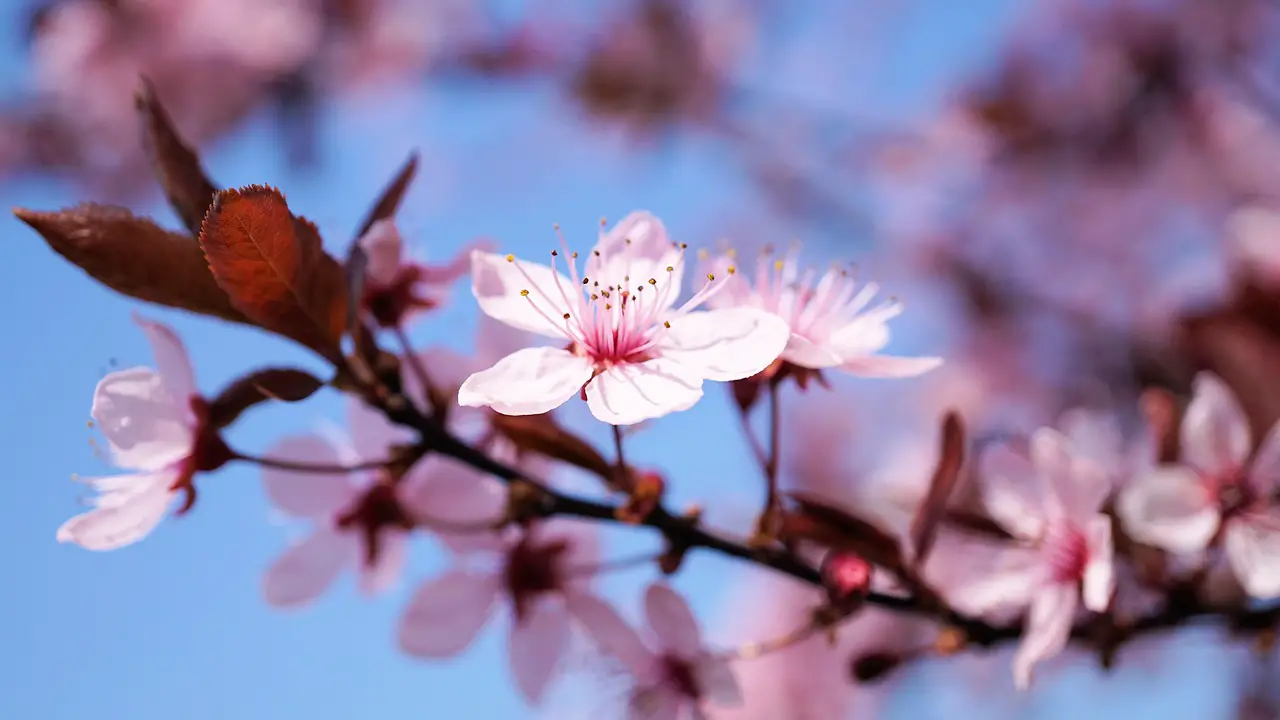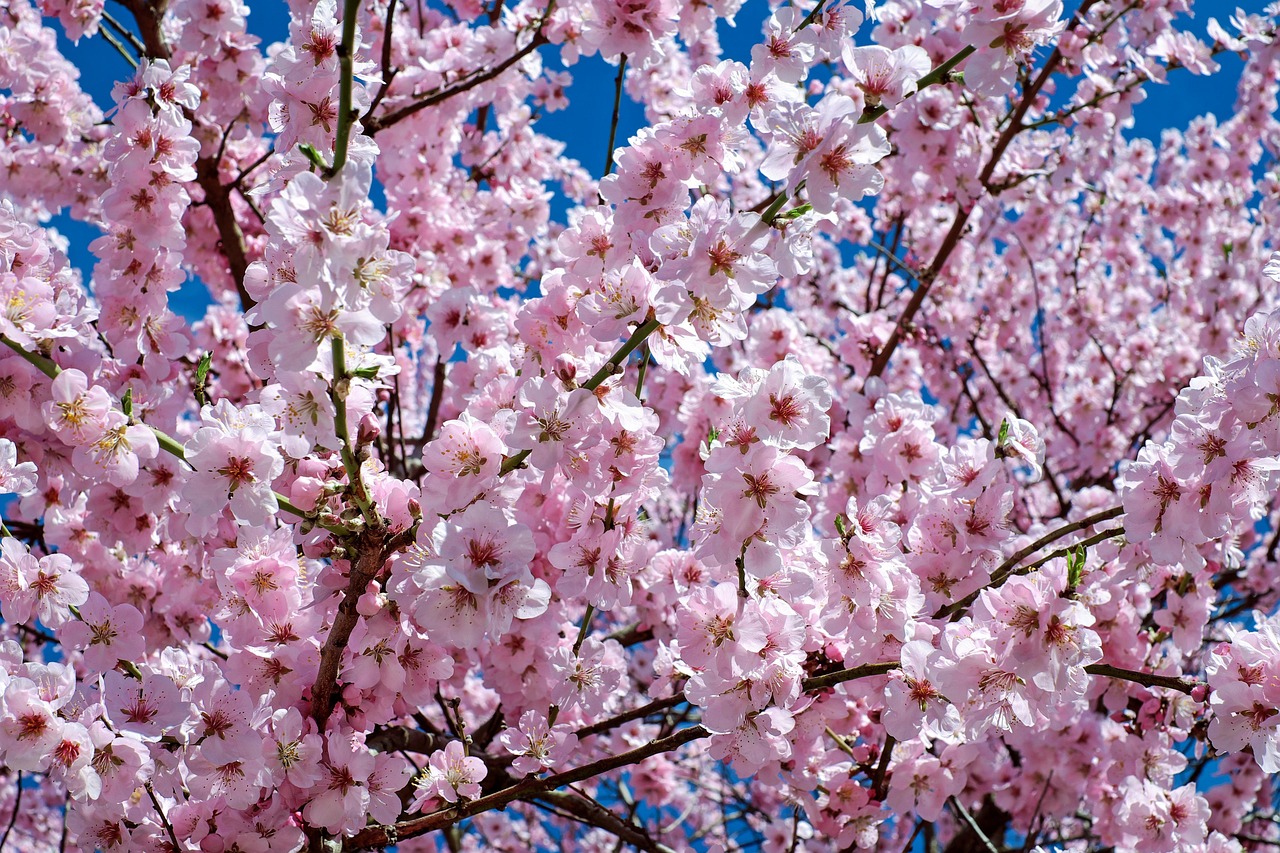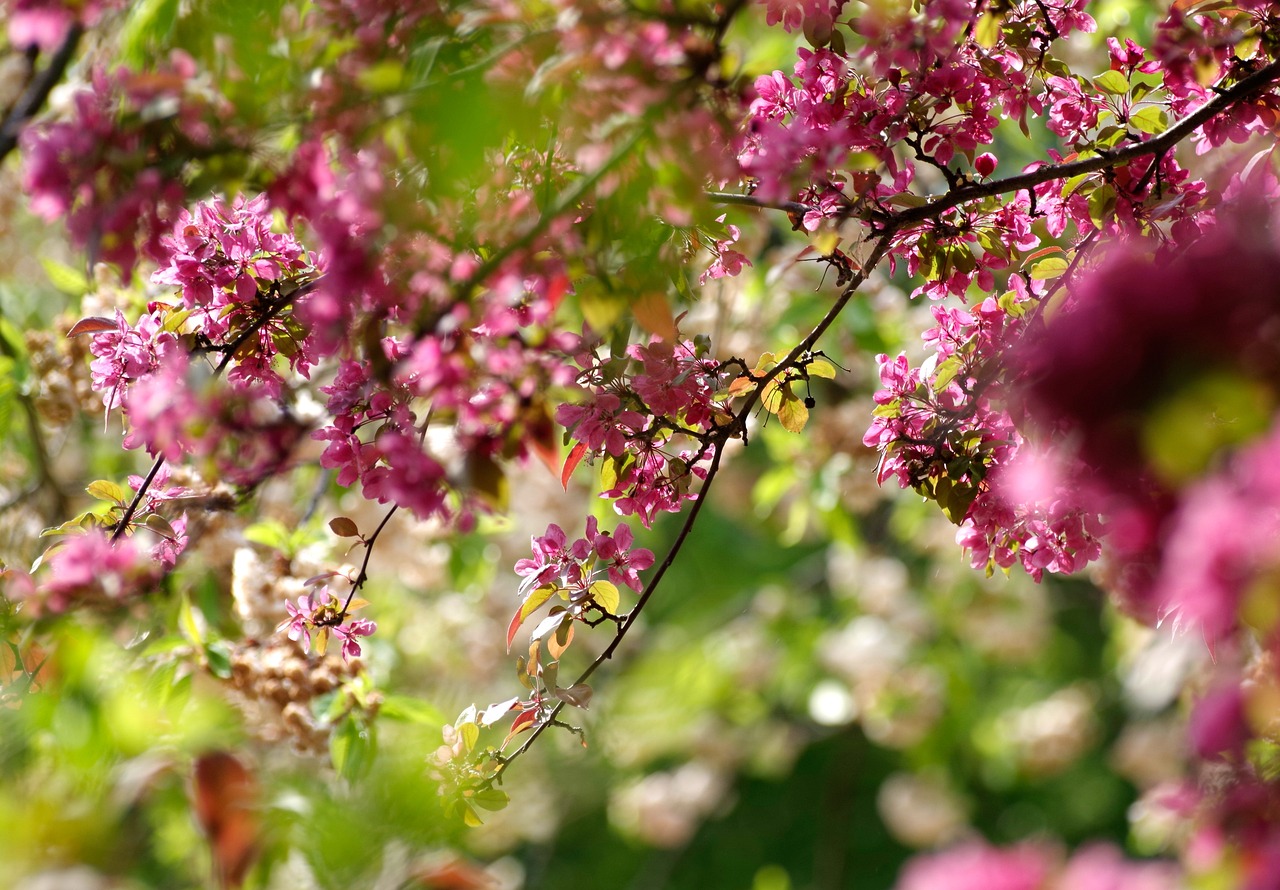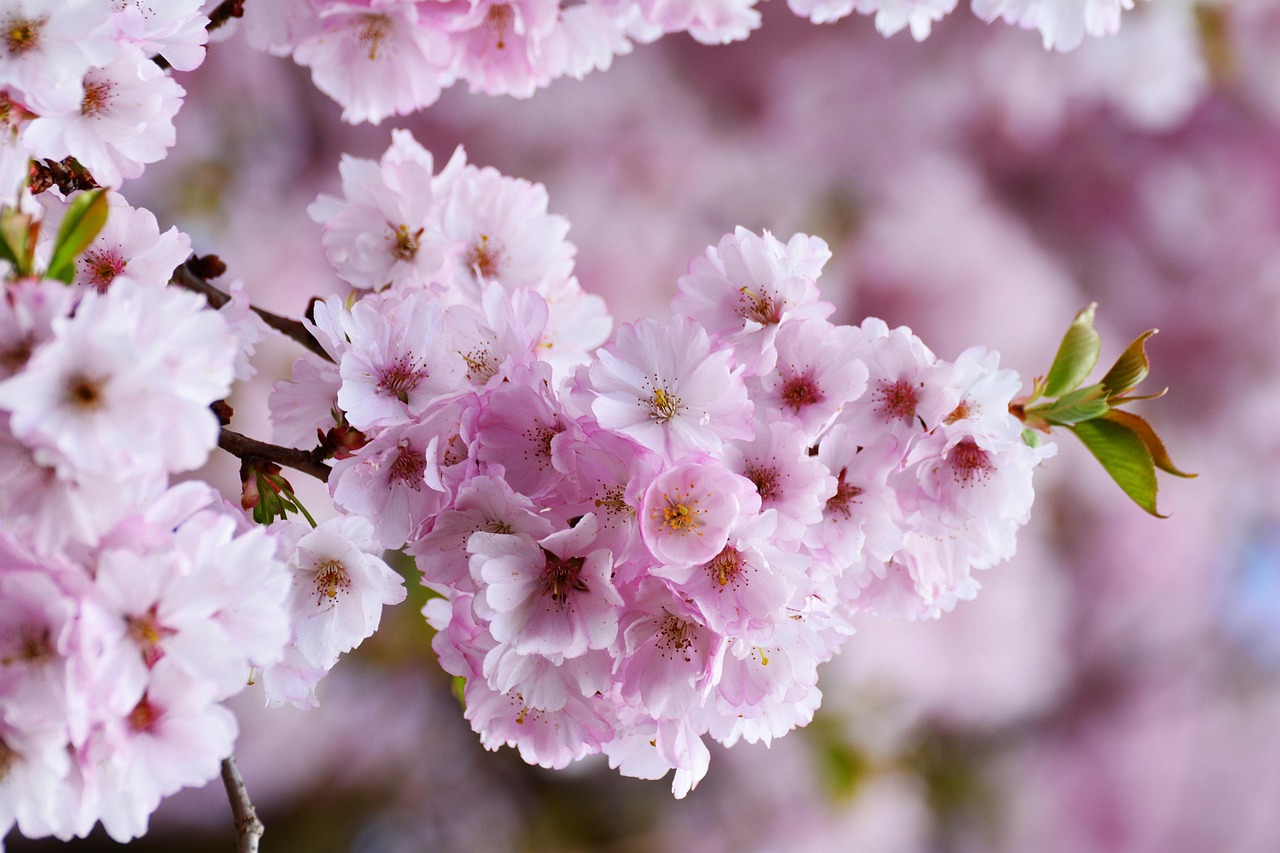Pruning Japanese cherry trees is essential for maintaining their health and ensuring stunning blooms. Proper pruning techniques enhance their shape, promote airflow, and encourage vibrant flower production, making them a focal point in any landscape.
Japanese cherry trees, known for their breathtaking spring blossoms, are a cherished addition to gardens and parks around the world. These trees, which belong to the Prunus genus, provide a spectacular display of pink and white flowers that attract visitors and photographers alike. However, to achieve the most scenic views, regular maintenance through pruning is necessary.

Pruning not only helps in shaping the tree but also improves its overall health. Pruning encourages new growth and allows more sunlight to reach the inner branches. This process is crucial for preventing diseases that can arise from overcrowded branches. Moreover, when done correctly, pruning enhances the natural beauty of the tree, making it an even more striking feature in your landscape design.
Understanding the Importance of Pruning
Pruning Japanese cherry trees serves multiple purposes. It helps to:
- Enhance air circulation within the canopy.
- Remove dead or diseased branches.
- Encourage new growth and flowering.
- Maintain a desirable shape and size.
- Prevent potential hazards from weak branches.
Each of these factors contributes significantly to the tree’s longevity and aesthetic appeal. By understanding the importance of pruning, gardeners can ensure that their cherry trees remain healthy and continue to produce magnificent blooms year after year.

Best Time to Prune
The timing of pruning is crucial for maximizing the benefits. For Japanese cherry trees, late winter to early spring is typically the best time for pruning. Pruning during dormancy reduces stress on the tree and minimizes sap loss. Early spring also prepares the tree for the upcoming blooming season.
However, it is essential to avoid pruning during the fall. Pruning in the fall can stimulate new growth that may not survive the winter months. This can lead to potential damage and weaken the tree’s overall structure. Therefore, timing your pruning correctly is vital for maintaining a healthy cherry tree.
Essential Pruning Techniques
When pruning Japanese cherry trees, several techniques should be considered:

- Thinning: This technique involves selectively removing branches to improve light penetration and air circulation. It helps prevent overcrowding and promotes healthy growth.
- Heading Back: This method shortens branches by cutting them back to a bud or side branch. Heading back encourages bushier growth and can enhance flowering.
- Cleansing: Remove any dead, damaged, or diseased branches. This practice prevents pests and diseases from affecting healthy parts of the tree.
Each technique serves a specific purpose in maintaining the tree’s health while enhancing its scenic qualities. Understanding how and when to apply these techniques will lead to better results in your garden.
Tools Needed for Pruning
Having the right tools is essential for effective pruning. Here are some commonly used tools:
| Tool | Description | Use |
|---|---|---|
| Pruning Shears | Sharp scissors for clean cuts on small branches. | Ideal for cutting branches up to ¾ inch in diameter. |
| Loppers | Long-handled tools for reaching higher branches. | Perfect for branches between ¾ inch and 1½ inches in diameter. |
| Saw | A hand saw or chainsaw for larger branches. | Necessary for cutting branches over 1½ inches in diameter. |
| Gloves | Protective wear to safeguard your hands. | Important for handling thorny branches and debris. |
| Ladder | A sturdy ladder for reaching tall trees. | Essential for safe access to high branches. |
Using these tools correctly will enable you to prune effectively without causing harm to the tree. Regular maintenance with proper tools not only enhances the tree’s appearance but also promotes its health and growth.

The art of pruning Japanese cherry trees requires knowledge and skill. As you develop your techniques, you will find that these trees can be magnificent features in any landscape, showcasing their beauty each spring with vibrant blossoms. The effort put into their care will be evident as they flourish year after year.
Common Mistakes in Pruning
While pruning Japanese cherry trees can enhance their beauty and health, many gardeners make common mistakes that can lead to damage or poor growth. Understanding these pitfalls can help ensure that your pruning efforts are effective and beneficial.
- Pruning at the Wrong Time: One of the most frequent mistakes is pruning at inappropriate times. Pruning in late fall or early winter can expose the tree to cold damage, while early spring pruning can hinder blooming.
- Over-Pruning: Removing too many branches can stress the tree. It can lead to a lack of energy for new growth and reduce flowering.
- Improper Cuts: Making cuts too close to the trunk can harm the tree. It is essential to leave a small collar of bark to protect the tree from decay.
- Ignoring Tree Structure: Pruning without considering the natural shape of the tree can result in an odd appearance. It is important to maintain balance and symmetry.
- Failure to Clean Tools: Using dirty tools can spread diseases between trees. Always clean and sterilize your pruning tools before and after use.
Avoiding these mistakes will help you achieve better results with your Japanese cherry trees. Proper pruning techniques lead to healthier trees that produce stunning blooms each year.
Seasonal Care for Cherry Trees
In addition to pruning, seasonal care is critical for Japanese cherry trees. Each season brings unique challenges and opportunities for maintenance. Here’s a breakdown of what to consider throughout the year:
Spring
Spring is a vital season for cherry trees. They begin to bloom, and proper maintenance is crucial.
- Monitor for Pests: Check for common pests like aphids or spider mites. Early detection allows for timely treatment.
- Fertilization: Apply a balanced fertilizer to support growth and flowering. Choose a product designed for flowering trees.
- Watering: Ensure adequate moisture, especially during dry spells. Cherry trees typically need about an inch of water per week.
Summer
During summer, focus on maintaining tree health and managing growth.
- Regular Watering: Continue to water consistently, particularly in hot weather. Mulching around the base can help retain moisture.
- Pest Management: Keep an eye out for any signs of infestation. Use organic pest control methods when possible.
- Light Pruning: If necessary, perform light pruning to shape the tree without affecting its bloom cycle.
Fall
As fall approaches, prepare the tree for winter dormancy.
- Remove Dead Leaves: Rake up fallen leaves to prevent fungal diseases.
- Final Watering: Water before the first frost to ensure the tree has enough moisture for winter.
- Mulching: Apply mulch around the base to protect roots from freezing temperatures.
Winter
Winter is a time of rest for cherry trees, but some care is still necessary.
- Avoid Pruning: Do not prune during winter as it can stress the tree and expose it to harsh conditions.
- Check for Damage: Inspect for any signs of winter damage or broken branches that may need attention in the spring.
- Protect from Snow Load: If heavy snow accumulates, gently brush it off branches to prevent breakage.
Pest and Disease Management
Pests and diseases can pose significant threats to Japanese cherry trees. Awareness and proactive management are essential for maintaining their health. Here are some common issues and their solutions:
Pests
The following pests are often encountered:
| Pest | Description | Treatment |
|---|---|---|
| Aphids | Small insects that suck sap from leaves, causing curling. | Use insecticidal soap or neem oil for control. |
| Spider Mites | Tiny pests that create webbing on leaves and cause damage. | Affected areas can be treated with miticides or water sprays. |
| Caterpillars | Larger pests that consume leaves and flowers. | Handpick or apply Bacillus thuringiensis (Bt) for control. |
Diseases
Common diseases affect cherry trees as well:
| Disease | Description | Treatment |
|---|---|---|
| Crown Gall | Bacterial infection causing galls on roots and stems. | Remove infected areas and ensure good drainage. |
| Powdery Mildew | A fungal disease resulting in white powdery spots on leaves. | Treat with fungicides or improve air circulation around the tree. |
| Bacterial Canker | A disease causing sunken lesions on branches. | Cut away infected areas and disinfect tools after use. |
Taking steps to prevent pests and diseases will help ensure your Japanese cherry trees remain healthy and vibrant throughout their lifecycle. Regular monitoring and timely interventions are key components of successful care.
Enhancing Scenic Views with Cherry Trees
Japanese cherry trees are not only admired for their blossoms but also for their overall aesthetic appeal. When strategically placed and properly pruned, these trees can create stunning views in any landscape. Understanding how to enhance their beauty can transform your garden or yard into a picturesque setting.
Choosing the Right Location
The location of your cherry trees plays a significant role in their visual impact. Consider the following factors when selecting a spot:
- Sunlight: Cherry trees thrive in full sun. Choose a location that receives at least six hours of direct sunlight per day to promote healthy growth and vibrant blooms.
- Space: Ensure there is enough space around the tree for it to grow without interference. This allows for proper airflow and reduces competition from surrounding plants.
- Visibility: Position the tree where it can be easily seen from windows, patios, or walkways. This enhances the enjoyment of its beauty.
- Soil Quality: Test the soil to ensure it drains well and is rich in nutrients. Amend the soil as necessary to provide an optimal growing environment.
Designing the Landscape
Incorporating cherry trees into your landscape design can create focal points that draw the eye. Here are some design ideas to consider:
- Grouping: Plant several cherry trees together to create a dramatic effect when they bloom. This clustering can also enhance pollination.
- Pathways: Line pathways or walkways with cherry trees to create an enchanting experience for visitors. The blossoms will provide a beautiful canopy during blooming season.
- Layering: Combine cherry trees with other plants and shrubs of varying heights. This layering technique adds depth and interest to your landscape.
- Water Features: Position cherry trees near ponds or fountains to reflect their beauty in water. The combination of water and blossoms creates a serene atmosphere.
Seasonal Displays and Maintenance
To maintain scenic views throughout the year, consider how seasonal changes affect your cherry trees and surrounding plants. Here are tips for ensuring beauty across seasons:
Spring Blooms
Spring is when cherry trees shine the brightest. To maximize their impact during this season:
- Regular Pruning: As discussed earlier, prune in late winter to prepare for spring blooms. Ensure you remove any dead or diseased branches before flowering begins.
- Companion Planting: Plant spring-blooming flowers like tulips or daffodils around the base of the cherry trees. This adds color and vibrancy during the blooming season.
- Event Planning: Host gatherings or picnics under the blooming cherry trees. This can create memorable experiences while showcasing their beauty.
Summer Foliage
During the summer months, focus on maintaining lush foliage and health:
- Irrigation: Ensure consistent watering to keep the leaves healthy and vibrant. Mulching can help retain moisture.
- Pest Control: Continue monitoring for pests during summer. Healthy trees will maintain their appearance and be more resistant to infestations.
- Cultural Events: Take advantage of summer blooms by hosting outdoor events that highlight your garden’s beauty.
Autumn Colors
As leaves change color in autumn, cherry trees can still contribute to stunning views:
- Fall Foliage: Enjoy the changing colors of cherry tree leaves, which can range from yellow to deep orange. This adds a new dimension to your landscape.
- Seasonal Decor: Incorporate autumn decorations around the base of your cherry trees, such as pumpkins or hay bales, to enhance the seasonal appeal.
- Maintenance Tasks: Rake fallen leaves regularly to prevent disease and maintain a tidy appearance in your garden.
Winter Structure
In winter, when cherry trees are dormant, their structure becomes more visible, providing a different kind of beauty:
- Tree Silhouette: The bare branches create unique silhouettes against the winter sky. This can add an artistic element to your landscape.
- Protective Measures: Wrap young trees or use burlap screens to protect them from harsh winter winds and frost damage.
- Pine Mulch: Apply pine needles or bark mulch around the base to prevent frost heaving and provide insulation.
Caring for Cherry Trees Beyond Pruning
Caring for Japanese cherry trees involves more than just pruning. A comprehensive approach ensures they remain healthy while enhancing scenic views throughout the seasons. Consider these additional care techniques:
Nutrient Management
Nutrients play a vital role in the overall health of cherry trees:
- Fertilization Schedule: Apply a slow-release fertilizer in early spring before new growth begins. This supports flowering and leaf production.
- Soil Testing: Regularly test your soil for pH and nutrient levels. Adjust fertilization based on these results to support optimal growth.
Irrigation Practices
Irrigation is critical, especially during dry spells:
- Deep Watering: Water deeply but infrequently to encourage deep root growth. Aim for about one inch of water per week, adjusting for rainfall.
- Irrigation Systems: Consider installing a drip irrigation system for consistent moisture without overwatering.
The combination of thoughtful pruning, seasonal care, and proper maintenance will ensure that Japanese cherry trees flourish in their environment, providing stunning views year-round.
Additional Considerations for Cherry Tree Care
While pruning, fertilization, and irrigation are essential for maintaining Japanese cherry trees, there are other factors to consider that can further enhance their health and appearance. These considerations will help ensure your trees remain a stunning feature in your landscape.
Mulching
Applying mulch around the base of your cherry trees can provide numerous benefits:
- Moisture Retention: Mulch helps retain soil moisture, reducing the need for frequent watering.
- Weed Suppression: A layer of mulch can prevent weeds from competing with your cherry trees for nutrients and water.
- Temperature Regulation: Mulch insulates the soil, helping to maintain a consistent temperature for the roots.
- Soil Enrichment: As organic mulch breaks down, it adds nutrients back into the soil.
Use organic materials such as wood chips or shredded bark for mulching, and apply a layer about 2-4 inches thick, keeping it a few inches away from the trunk to prevent rot.
Pruning Tips for Aesthetic Shaping
In addition to health benefits, pruning can also be used to shape the tree for aesthetic purposes. Here are some tips to achieve an attractive form:
- Focus on the Center: Aim for an open center that allows sunlight to penetrate. This encourages even flowering and prevents overcrowding.
- Maintain a Balanced Canopy: Prune to create a balanced shape. Avoid heavy pruning on one side, which can lead to lopsided growth.
- Seasonal Pruning: Consider light summer pruning to maintain shape without impacting bloom cycles. This approach can help keep the tree looking its best throughout the year.
Educating Yourself on Varieties
Different varieties of Japanese cherry trees may have specific care requirements and growth habits. Educating yourself about the variety you have can enhance your success:
- Know Your Variety: Research the specific needs of your cherry tree variety. Some may require more water or have different blooming times.
- Consult Local Experts: Reach out to local horticulturists or gardening centers for advice on climate and soil conditions specific to your area.
- Join Gardening Communities: Engage with online forums or local gardening clubs. Sharing experiences with others can provide valuable insights and tips.
Final Thoughts
Caring for Japanese cherry trees is a rewarding endeavor that brings beauty and tranquility to any landscape. By employing proper pruning techniques, understanding seasonal care, and applying effective maintenance strategies, you can create a stunning display of blossoms each spring. The combined efforts of thoughtful planting, consistent care, and knowledge about your trees will lead to healthier plants that consistently provide scenic views throughout the year.
Remember that regular monitoring for pests and diseases, along with proactive measures like mulching and irrigation, will further enhance the vitality of your cherry trees. As they flourish, they will not only beautify your space but also become a source of joy and inspiration for you and your visitors.
In summary, Japanese cherry trees are not just seasonal highlights but cherished elements of your landscape design. With dedication and care, you can ensure they remain vibrant and stunning year after year. Embrace the journey of nurturing these magnificent trees, and enjoy every blossom they bring to your life.
